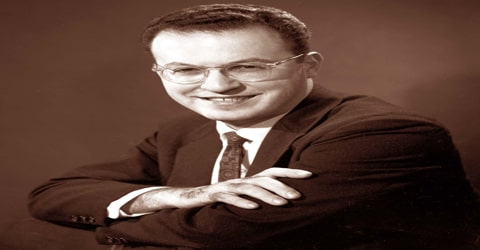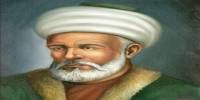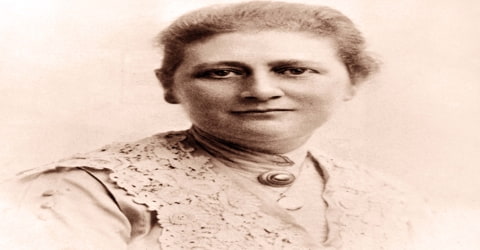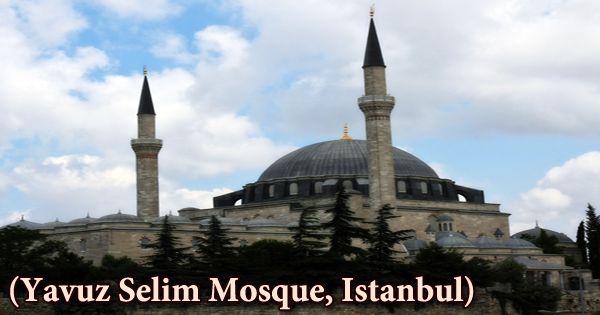Aldous Huxley – Writer, Novelist, Philosopher (1894-1963)
Full name: Aldous Leonard Huxley
Date of birth: 26 July 1894
Place of birth: Godalming, England
Date of death: 22 November 1963 (aged 69)
Place of death: Los Angeles, California
Resting place: Compton, Guildford, England
Occupation: Writer, novelist
Notable works:
- Brave New World
- Island
- Point Counter Point
- The Doors of Perception
- The Perennial Philosophy
Spouses: Maria Nys (m. 1919–1955)
Laura Huxley (m. 1956–1963)
Early Life
Aldous Huxley, in full Aldous Leonard Huxley was born on July 26, 1894, in Godalming, Surrey, England. He was an English novelist and critic gifted with an acute and far-ranging intelligence. His works were notable for their elegance, wit, and pessimistic satire.
He was best known for his novels including Brave New World, set in a dystopian London; for non-fiction books, such as The Doors of Perception, which recalls experiences when taking a psychedelic drug; and a wide-ranging output of essays. Early in his career Huxley edited the magazine Oxford Poetry and published short stories and poetry. Mid career and later, he published travel writing, film stories, and scripts. He spent the later part of his life in the U.S., living in Los Angeles from 1937 until his death. In 1962, a year before his death, he was elected Companion of Literature by the Royal Society of Literature.
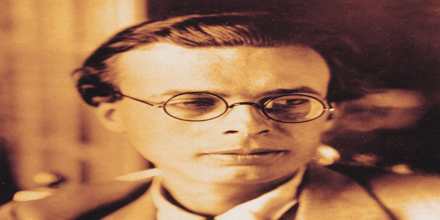 (Young Aldous Huxley)
(Young Aldous Huxley)
Huxley was a humanist, pacifist, and satirist. He later became interested in spiritual subjects such as parapsychology and philosophical mysticism, in particular universalism. By the end of his life, Huxley was widely acknowledged as one of the pre-eminent intellectuals of his time. He was nominated for the Nobel Prize in Literature in seven different years.
He followed with several more equally successful satirical novels before publishing the work for which he is best known, Brave New World. A dark vision of the future, it is widely regarded as one of the greatest novels of the 20th century. Huxley moved to the United States in 1937 and for the rest of his life maintained a prolific output of novels, nonfiction, screenplays and essays. He died of cancer in Los Angeles, California, in 1963.
There are differing accounts about the details of the quality of Huxley’s eyesight at specific points in his life. About 1939, Huxley encountered the Bates method for better eyesight, and a teacher, Margaret Darst Corbett, who was able to teach the method to him. In 1940, Huxley relocated from Hollywood to a 40-acre (16 ha) ranchito in the high desert hamlet of Llano, California, in northernmost Los Angeles County.
He wrote a book about his successes with the Bates Method, The Art of Seeing, which was published in 1942 (U.S.), 1943 (UK). The book contained some generally disputed theories, and its publication created a growing degree of popular controversy about Huxley’s eyesight.
On the other hand, Huxley’s second wife, Laura Archera Huxley, would later emphasise in her biographical account, This Timeless Moment: “One of the great achievements of his life: that of having regained his sight.” After revealing a letter she wrote to the Los Angeles Times disclaiming the label of Huxley as a “poor fellow who can hardly see” by Walter C. Alvarez, she tempered this: “Although I feel it was an injustice to treat Aldous as though he were blind, it is true there were many indications of his impaired vision. For instance, although Aldous did not wear glasses, he would quite often use a magnifying lens.”
Her account, in this respect, is discernibly congruent with the following sample of Huxley’s own words from The Art of Seeing: “The most characteristic fact about the functioning of the total organism, or any part of the organism, is that it is not constant, but highly variable.” Nevertheless, the topic of Huxley’s eyesight continues to endure similar, significant controversy, regardless of how trivial a subject matter it might initially appear.
Childhood and Educational Career
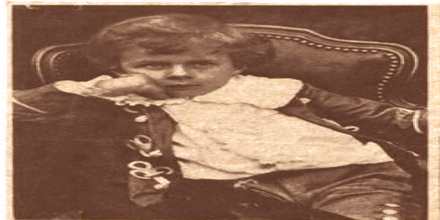
Huxley was born in Godalming, Surrey, England, in 1894. He was the third son of the writer and schoolmaster Leonard Huxley, who edited Cornhill Magazine. His grandfather was the noted biologist and naturalist T. H. Huxley, an early proponent of Charles Darwin’s theory of evolution; his mother, Julia, was a descendant of the English poet Matthew Arnold. In adulthood, Huxley’s older brothers, Julian and Andrew, would both become accomplished biologists, and Huxley himself envisioned a future career in science from an early age. Aldous had another brother, Noel Trevelyan Huxley (1891–1914), who committed suicide after a period of clinical depression.
But while he was still a boy, Huxley’s life would be upended by tragedy. In 1908 his mother died of cancer, and in 1911 he was struck blind by the disease keratitis punctata.
As a child, Huxley’s nickname was “Ogie”, short for “Ogre”. He was described by his brother, Julian, as someone who frequently “contemplated the strangeness of things”. According to his cousin and contemporary, Gervas Huxley, he had an early interest in drawing.
Huxley’s education began in his father’s well-equipped botanical laboratory, after which he enrolled at Hillside School, Malvern. After Hillside, he went on to Eton College. His mother died in 1908 when he was 14.
In October 1913, Huxley went up to Balliol College, Oxford, where he read English Literature. In January 1916, he volunteered to join the British Army in the Great War, but was rejected on health grounds, being half-blind in one eye. His eyesight later partly recovered. In 1916 he edited Oxford Poetry and in June of that year graduated BA with First Class honours.
Career
 (Oxford University)
(Oxford University)
A brilliant student despite the obstacles of his youth, Huxley earned a scholarship to Balliol College at Oxford University, where he studied English literature, reading with the aid of a magnifying glass and eye drops that dilated his pupils. Huxley completed his first (unpublished) novel at the age of 17 and began writing seriously in his early 20s, establishing himself as a successful writer and social satirist. His first published novels were social satires, Crome Yellow (1921), Antic Hay (1923), Those Barren Leaves (1925), and Point Counter Point (1928). Brave New World was Huxley’s fifth novel and first dystopian work. In the 1920s he was also a contributor to Vanity Fair and British Vogue magazines.
He also began to write poetry, and in 1916 he published his first book, a collection of poems titled The Burning Wheel, the same year in which he graduated with honors.
Amidst all of these professional and personal developments, Huxley began work on his novel Crome Yellow, a parody of the intelligentsia and his experiences at Garsington. Although the book’s publication in 1921 angered many of his Garsington acquaintances, it also established Huxley as an important writer and sold well enough to allow him to pursue his literary destiny. While traveling about Europe with his family for the next several years, Huxley produced the commercially successful novels Antic Hay (1923), Those Barren Leaves (1925) and Point Counter Point (1928), which, like Crome, were satires of contemporary society and conventional morality. Huxley’s greatest work, however, was still to come.
Ensconced in his recently purchased villa in the South of France, in late 1931 Huxley began work on what is now widely considered to be one of the Western canon’s most important novels. Published in 1932, Brave New World marks the apogee of Huxley’s abilities as a satirist.
In Brave New World, set in a dystopian London, Huxley portrays a society operating on the principles of mass production and Pavlovian conditioning. Huxley was strongly influenced by F. Matthias Alexander and included him as a character in Eyeless in Gaza.
Starting from this period, Huxley began to write and edit non-fiction works on pacifist issues, including Ends and Means, An Encyclopedia of Pacifism, and Pacifism and Philosophy, and was an active member of the Peace Pledge Union.

The following year (1936), he left Europe for North America, where he completed a work on pacifism titled Ends and Means, and in 1938 he settled in Los Angeles, California, where he would spend most of the rest of his life. During this time, Huxley added screenwriter to his long list of occupations and was paid handsomely by studios for his work. Among his more notable film credits are Pride and Prejudice (1940), Jane Eyre (1943) and Madame Curie (1943).
Huxley became a close friend of Remsen Bird, president of Occidental College. He spent much time at the college, which is in the Eagle Rock neighborhood of Los Angeles. The college appears as “Tarzana College” in his satirical novel After Many a Summer (1939). The novel won Huxley a British literary award, the 1939 James Tait Black Memorial Prize for fiction. Huxley also incorporated Bird into the novel.
During this period, Huxley earned a substantial income as a Hollywood screenwriter; Christopher Isherwood, in his autobiography My Guru and His Disciple, states that Huxley earned more than $3,000 per week (an enormous sum in those days) as a screenwriter, and that he used much of it to transport Jewish and left-wing writer and artist refugees from Hitler’s Germany to the U.S.
Huxley wrote an introduction to the posthumous publication of J. D. Unwin’s 1940 book Hopousia or The Sexual and Economic Foundations of a New Society.
On 21 October 1949, Huxley wrote to George Orwell, author of Nineteen Eighty-Four, congratulating him on “how fine and how profoundly important the book is”. In his letter to Orwell, he predicted:
Within the next generation I believe that the world’s leaders will discover that infant conditioning and narco-hypnosis are more efficient, as instruments of government, than clubs and prisons, and that the lust for power can be just as completely satisfied by suggesting people into loving their servitude as by flogging them and kicking them into obedience.
In a 1958 televised interview conducted by journalist Mike Wallace, Huxley outlined several major concerns: the difficulties and dangers of world overpopulation; the tendency toward distinctly hierarchical social organization; the crucial importance of evaluating the use of technology in mass societies susceptible to wily persuasion; the tendency to promote modern politicians to a naive public as well-marketed commodities.
As Huxley tirelessly explored both the world around him and his inner self, sharing his findings through his work, in 1960 he was diagnosed with cancer. For the next two years he persevered, however, completing what would prove to be his last novel, The Island (1962), which placed a more positive spin on some of the themes Huxley addressed in Brave New World.
Beginning in 1939 and continuing until his death in 1963, Huxley had an extensive association with the Vedanta Society of Southern California, founded and headed by Swami Prabhavananda. Together with Gerald Heard, Christopher Isherwood, and other followers he was initiated by the Swami and was taught meditation and spiritual practices.
In 1944, Huxley wrote the introduction to the “Bhagavad Gita: The Song of God”, translated by Swami Prabhavanada and Christopher Isherwood, which was published by The Vedanta Society of Southern California.
From 1941 until 1960, Huxley contributed 48 articles to Vedanta and the West, published by the society. He also served on the editorial board with Isherwood, Heard, and playwright John van Druten from 1951 through 1962.
Huxley also occasionally lectured at the Hollywood and Santa Barbara Vedanta temples. Two of those lectures have been released on CD: Knowledge and Understanding and Who Are We? from 1955.
In spring of 1953, Huxley had his first, supervised, experience with psychedelic drugs (in this case, mescaline). After the publication of The Doors of Perception, in which he recounted this experience, Huxley and Swami Prabhavanada disagreed about the meaning and importance of the psychedelic drug experience, which may have caused the relationship to cool, but Huxley continued to write articles for the society’s journal, lecture at the temple, and attend social functions.
Personal Life
Aldous Huxley was born in Godalming, England, on July 26, 1894. As a child, Huxley’s nickname was “Ogie”, short for “Ogre”. Huxley’s education began in his father’s well-equipped botanical laboratory.
During World War I, Huxley spent much of his time at Garsington Manor near Oxford, home of Lady Ottoline Morrell, working as a farm labourer. There he met several Bloomsbury figures, including Bertrand Russell, Alfred North Whitehead, and Clive Bell. Later, in Crome Yellow (1921) he caricatured the Garsington lifestyle.
In 1919 he also made advances in his personal life, marrying Belgian refugee Maria Nys, also at Garsington. She gave birth to their son, Matthew, the following year.
 (Aldous Huxley and his 1st wife Maria Nys.)
(Aldous Huxley and his 1st wife Maria Nys.)
In 1937, Huxley moved to Hollywood with his wife Maria, son Matthew, and friend Gerald Heard. He lived in the US, mainly in southern California, until his death, but also for a time in Taos, New Mexico, where he wrote Ends and Means (published in 1937). The book contains illuminating tracts on war, religion, nationalism and ethics.
In 1956, Huxley married his second wife, Laura, who would later write a biography of their life together titled This Timeless Moment (1968).
 (Aldous Huxley and his wife Laura Archer)
(Aldous Huxley and his wife Laura Archer)
After World War II, Huxley applied for United States citizenship. His application was continuously deferred on the grounds that he would not say he would take up arms to defend the U.S. He claimed a philosophical, rather than a religious objection, and therefore was not exempt under the McCarran Act. He withdrew his application. Nevertheless, he remained in the country; and in 1959 he turned down an offer of a Knight Bachelor by the Macmillan government.
Death
As Huxley tirelessly explored both the world around him and his inner self, sharing his findings through his work, in 1960 he was diagnosed with cancer. Huxley died aged 69, at 5:20 p.m. (Los Angeles time), on 22 November 1963.

Media coverage of Huxley’s passing — as with that of the author C. S. Lewis – was overshadowed by the assassination of U.S. President John F. Kennedy on the same day. This coincidence served as the basis for Peter Kreeft’s book Between Heaven and Hell: A Dialog Somewhere Beyond Death with John F. Kennedy, C. S. Lewis, & Aldous Huxley, which imagines a conversation among the three men taking place in Purgatory following their deaths.
Huxley’s memorial service took place in London in December 1963 which was led by his older brother Julian, and his ashes were interred in the family grave at the Watts Cemetery, home of the Watts Mortuary Chapel in Compton, a village near Guildford, Surrey, England.
Huxley had been a long-time friend of Russian composer Igor Stravinsky, who later dedicated his last orchestral composition to Huxley. Stravinsky began Variations in Santa Fé, New Mexico, in July 1963, and completed the composition in Hollywood on 28 October 1964. It was first performed in Chicago on 17 April 1965, by the Chicago Symphony Orchestra conducted by Robert Craft.
Honours and Awards
On 9 April 1962, Huxley was informed he was elected Companion of Literature by the Royal Society of Literature, the senior literary organisation in Britain, and he accepted the title via letter on 28 April 1962. The correspondence between Huxley and the society are kept at the Cambridge University Library. The society invited Huxley to appear at a banquet and give a lecture at Somerset House, London in June 1963. Huxley wrote a draft of the speech he intended to give at the society; however, his deteriorating health meant he would not be able to attend.
He was nominated for the Nobel Prize in Literature in seven different years.
- 1939 James Tait Black Memorial Prize (for After Many a Summer Dies the Swan)
- 1959 American Academy of Arts and Letters Award of Merit (for Brave New World).
- 1962 Companion of Literature (Royal Society of Literature)

